Company history in English and the
navigation links to the Dutch pages.
VAN DER HEEM & BLOEMSMA Ltd. Erres and Aetherruiser radio
The Hague, The Netherlands, from 1926 until 1966
INDUSTRIAL HERITAGE
After a couple of relative peaceful centuries the speed at which humans communicate with each other increased greatly at the end of the 19th century (around 1870). First there was the steamship later the steam locomotive, road paving, road lights, telephone systems and the newspapers greatly improved there speed of information. Then Marconi invented wireless communication, initially for the Morse telegraph but later at the beginning of the 20th century also for voice and music. It was just after this invention that three Dutch army officers decided it was time to make their contribution to these rapid developments .....
1926 THREE ARMY OFFICERS START THE COMPANY
P.H.J. van der Heem (51), his youngest brother L.W. van der Heem (33) and Ir. J. Bloemsma (26) founded the radio producer "van der Heem & Bloemsma" on the May 1st 1926. The main hobby of Lieutenant L.W. van der Heem and the nineteen year old son of the founder J. van der Heem. In their spare time they already successfully sold radios of the CQ type to family and friends. Co founder Ir. J. Bloemsma was an army friend of L.W. van der Heem.

The "production" initially took place in a small shed behind the family residence. The first radio sets produced were the H & B III. Of this H & B type set various models were made: there was also the H & B IV and the H & B V.
During an exhibition that was held from October 2nd until the 11th 1926 in Amsterdam - Internationale Radio Tentoonstelling Amsterdam IRTA stand 86 - a "H & B V super” was sold to the then Minister of Finance Dr. H. Colijn. During the first half year the company produced five sets a week with their six employees.
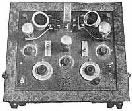

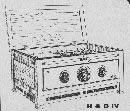
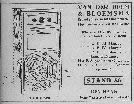




But for the young company the contacts that were made there with the trading company R.S. Stokvis & Zonen in Rotterdam during the IRTA exhibition were perhaps of even more importance than the sale of this H & B V super to the Finance Minister. Two of the directors of the Rotterdam based trading company Mr. J. van Randwijk (38) and Mr. A. Erwich, placed an order by van der Heem & Bloemsma for 300 radio sets in 1928. A variety of models the Erres K, KC, KF, KR, KS and KW, all intended for sale in The Netherlands and sold via their own shopkeepers. At first Van der Heem & Bloemsma struggled to cope with the delivery of such a large order but these difficulties are soon resolved thanks to a smart talent for organisation within the young company.
Sale directly to their own dealers continues alongside this big order. Evidence of this could be found in stand run by the firm Teske Douzastraat 5 in Leiden for example, which was completely filled with H & B sets.
The house beside van der Heem & Bloemsma at 44 Johan Maetsuyckerstraat the house across the road at 61and even a garage box nearby in the 23 Cornelis Houtmanstraat are acquired to accommodate the expanding company. The famous furniture factory H.P. Mutters & Zoon in The Hague built beautiful cabinets for their radio sets.

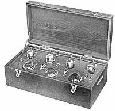


The range of products is extended to include even more models. First came the H & B KG (III, IV and V). Later in 1928, the Erres model KL, KWB, KWS and KY. The Y represents the steel chassis of the radio then applied for the first time. The diverse parts can then be built firmly on top of this metal chassis and, via the chassis, a good quality electric grounding is guaranteed for all parts. For all the Erres radio models that were sold from this moment, by the Rotterdam based R.S. Stokvis trading company the letter "K" was placed before de type number.
Meanwhile van der Heem & Bloemsma are also making equipment for the recently started wire broadcasting relay companies. Such equipment included amplifier installations and loose loudspeakers for example.
Due to the great successes booked by the furniture factory Mutters at this time - they constructed interior ship woodwork, furniture and wood panelling in houses and offices - H & B needed to take the production of the radio cabinets into their own hands. They found extra space in the Siebergstraat.


1928 BLOEMSMA LEAVES THE COMPANY
Mr. Ir.J. Bloemsma leaves in September 1928 the factory and accept a new job in China for Philips NV.
1929 STORTENBEKERSTRAAT 177 EVERYTHING IN ONE FACTORY
Because the model KY was so successful H & B decide to merge the various production locations into one new factory in the 177 Stortenbekerstraat in The Hague
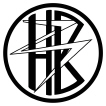
The bother of having separate batteries outside the cabinet, for the three different voltages within a single radio set became something of the past. With the newly built in transformer the radio can directly be connected to the home electric wall socket. Another technical improvement enables easier control. The two sometimes three tuning buttons are replaced by one practical button which allows easy precise tuning of the desired broadcasting frequency.
The large amount of H & B employment ads (typist, accountant) forms a clear sign that the company is doing very well
The company also receives an order for 25,000 radio loudspeaker boxes. They are intended for the wire broadcasting companies. The order is made on a large brand new assembly line.
Towards the end of 1929 and at the beginning of 1930 the production of the KY 107 model starts. The set is named “zanger aan de wand” (singer on the wall), this model was the first radio set in Europe with loudspeaker and the radio equipment placed in one box.
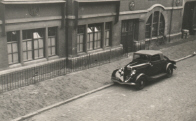
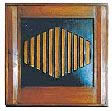

1929 THE FIRM IS CONVERTED INTO AN Ltd COMPANY
On October 14th 1929 just a week before the Wall Street crash on the 29th in New York, the company is converted to a limited liability company "NV voorheen radiofabriek en Ingenieursbureau van der Heem & Bloemsma". Fifty percent of the shares belong to the van der Heem family and the other fifty percent are owned by R.S. Stokvis & Zonen NV
1930 PHILIPS SHAREHOLDER FOR 50 %
The market for radio appliances is shaken by new developments. Whereas the radio had, in the past, been mainly a luxury product for the select and the wealthy, now the radio is becoming much more a mass product. Still money can be made if they are made in large quantities and produced more cheaply. Investment is needed in modern assembly lines.
Until 1935 Philips held fifty percent of the shares. In return for these fifty percent "van der Heem" receives free use of all Philips radio patents and van der Heem on her side uses only Philips radio lamps for their products. Philips is during this period with two seats represented in the supervisory board. Having Philips as a major shareholder does unfortunately lead to a few problems. In 1933 the two supervisory directors from Philips were refused entrance to the company after a row over the sales of high quality Erres radio sets in the Dutch East Indies. Van der Heem realised in time - 1,5 year in advance of Philips - that the quality of the radio sets their, must be much better, to withstand the extreme tropic conditions. Their superior wooden radio cabinets that are then developed are indeed a big success.
Mr. A. den Breems leaves for the Dutch East Indies to set up the sales and manufacturing. Amongst other models he sells the KY 107 that has a short wave receiver and is quite suitable for alternating current. Mr. L.W. van der Heem visits the Dutch Indies in 1934 and lays a sturdy basis for further growth. Breems also introduced the model KY 212. The sales in Belgium are also addressed and Van der Heem & Bloemsma opens a service and sales centre on the Boulevard Barthelémy in Brussels.
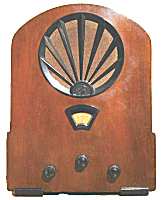
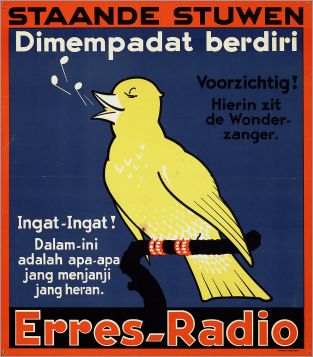


1933 FOUNDER P.H.J. VAN DER HEEM DIED
The founder, Mr. P.H.J. van der Heem (born August 31 1875) passes away fighting cancer on May 30th 1933 in The Hague.
1935 PHILIPS SELS IT SHARES
Even after the departure of Philips as shareholder in 1935 the cooperation between H & B and Philips remains somewhat difficult. Van der Heem was not only a large client of many different Philips parts; but Philips also made use of van der Heem’s expertise and bought many semi-finished units. Philips share is bought back in 1935 by the two other shareholders the Van der Heem family and R.S. Stokvis & Zonen NV. From then on they each owned fifty percent of the shares again.
1935 COSY SHARING THE MARKET
Van der Heem and Philips made agreements on the sale of radio sets in the Netherlands. From then on - via a mutually agreed policy on prices and types - van der Heem NV was responsible for a fixed market share of all the radio sets sold by the two companies. With this cartel agreement mainly for the Dutch radio market, it was secure for both. In a very short amount of time The Netherlands was able to develop into an important exporter of radio sets. In 1935 radio sets alone made up 8% of the total Dutch export sales.
DIVERSIFICATION
Radio sales fluctuate with the season. In autumn and winter radio sales is at its peak. To become less dependant on one product range van der Heem releases a line of vacuum cleaners in 1935. The kettle model SZ 1 and SZ 2 and the very successful bleu and black torpedo model SZ 3.

1936 OPENING OF THE LAAKWEG FACTORY
In 1936 the company celebrates its tens anniversary. For the increased production the company needs extra factory space. They found one on the Laakweg in The Hague. In this factory the 100,000 th radio set is produced in 1937. Soon even this factory proves to be too small.
On February 23rd 1938 two hectares of land along the Maanweg were acquired on long lease from the municipality of The Hague. When "van der Heem NV" existed twelve and a half years on November first in 1938, the first stone for the new Maanweg factory was laid by the President of the Supervisory board Mr. J. van Randwijk. It was designed by the architect C. Oosthoek Pc Zn. Building costs amounted to ƒ 423,500 (Dutch guilders) and the building was done by the Rotterdam based company Volker Bouwmaatschappij N.V.
1938 AETHERKRUISER SECOND MARK FOR THE DUTCH MARKET
On the yearly trade fair of Utrecht Ir. J.M.F.A. van Dijk (1912 - 1973) introduced his new trade company ANRU (Algemene Nederlandse Radio Unie) and the company's first product the Aetherkruiser radio model AK 380 in 1938. The trading company sold radio's until 1953 under the Aether kruiser trade mark. All these radio's were bought from "van der Heem" out of the existing product range, but the exterior was exclusively redesigned for Aetherkruiser. Their are thirty models known.
Eventually Aetherkruiser operated from Mr. van Dijks house on the Limburg Stirumlaan 20 in Amersfoort. Later iIn 1945 the company moved to the Keizersgracht 450 in Amsterdam. Later Mr. van Dijk lived on the Boulevard in Noordwijk with his "Nederlands Radarproefstation" at home.


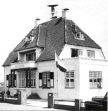

1939 NEW MAIN OFFICE MAANWEG 156 AND FIRE IN OLD FACTORY
The Maanweg factory is opened in 1939 (It was demolished in 1997, on February 17th). The 500th employee is welcomed. The factory is paid for with company resources and a loan from the Dutch "Maatschappij voor Industrie financieringen".
In the Stortenbekerstraat factory fire broke out on May 4th in1938 and the factory was severely damaged
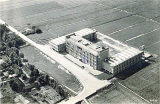
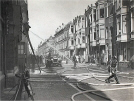

1939 CHANGED COMPANY NAME
In 1939 de name of Ir. J. Bloemsma disappears from the company name and from then on the company changes into “van der Heem NV.”

1943 RADIO FORBIDDEN IN THE NETHERLANDS (unique market information)
From may 1943 the German occupation forces, ordered all 1,2 million Dutch home radio appliances to be turned into them. Mainly to avoid listening to the very popular “Radio Oranje” which broadcasted in Dutch from London. The Germans were able to collect 840,000 of them, the rest was kept in hiding by the Dutch people. Part of the collected radio’s went to storage, and a big share was send to Germany to the damaged cities. This whole process was very well documented and after the war fifteen percent of the radio’s went back to the original owners.
This documentation complete with type and serial numbers - witch is kept until today - also provided a unique peek into the Dutch radio market in 1943. It proved that the radio cartel with Phillips had worked. Although market share varied greatly in the country as a whole. The Erres KY 126 was the most popular Erres radio, Overijsel was the most popular Erres province, North Holland the less popular Erres province.
Sales and trade to the Dutch market was already forbidden from the start of 1942. Van der Heem NV still had to produce radio’s until 1944 but these were only for the German market. This because German radio factories where making weapons instead of radio’s, and because high demand cause of war damage to the German city’s.
Unnecessary to say that after the war there was high demand for replacement in The Netherlands. What helped to restore quickly the damaged machinery in the van der Heem factories.
1948 SOLEX
In 1944 the entire "Kroon Rijwielen" bicycle factory in Rotterdam is bought and moved to the factory on the Laakkade in The Hague. There the assembly of bicycles starts in May 1945. After 1948 Solex motorbikes are produced in this factory. After the introduction period yearly 48,000 motorbikes are made, up to 1968.
1949 VAN DER HEEM NV SHARES ON THE PUBLIC STOCK EXCHANGE
In 1949 Van der Heem NV issues new shares and shares are openly traded on the Amsterdam stock exchange. The company grows in many facets after the war. In 1947 the number of employees exceeds 1,000. More than 1,000 radios are made each week.
1951 THE COMPANY 25 YEARS
In 1951 2,000 people work in the Van der Heem company. The Maanweg factories are extended. The statue “Hoger zij uw Vlucht” (higher will be your flight) is placed in front of the factory in 1951, symbolising the incredible growth after the war. It is made by the famous sculptor Albert Termote (1878-1978) from Voorburg in The Netherlands.


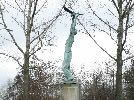


1950 TELEVISION
In 1950 nearly every Dutch household has again a radio set. The factory needed something new. Just for the war in 1939, the broadcast of television had begun in the United States (color in 1954). But in the Netherlands these new developments were proceeding at a very slow rate. And in contrast to radio, television sets were not as well suited to research and development by hobbyist. The television tube (the screen) is complex. Specially if you have no glassblowing facilities at your disposal.
Not before October 2nd 1951 the NTS starts broadcasting on some weekdays with short TV programs. Partially this was because the government did not want to divert the - much needed - production capacity to "luxurious items" so shortly after the war. The program makers also had difficulties with the new medium. Right from the start the broadcasting organisation was - as with radio - along the same Dutch socio political compartment lines. So fresh developments within the completely different new medium was tempered. It would take until the second half of the fifties for growth to take flight. Then the number of broadcasting hours where increased by the Government. Colour television would not reach the Netherlands until 1967.
1955 A LOT MORE PRODUCTS
In addition to the manufacturing of radios and TV many household products are introduced into the van der Heem manufacturing programme at the end of the fifties and the beginning of the sixties. The desk ventilators, hair dryers, hand drills, vacuum cleaners and electrical blankets, pillows and mattresses amongst other things. But also professional (radio) communication equipment for military tanks and the Starfighter combat aircraft and Walky-talkie sea / land communication for pilots on the seaport Rotterdam are produced.
Van der Heem also develops and build for the European Space Program the "program unit" used for the three stages of the space rocket. The unit keeps the rocket in the perfect track by managing and continuously changing the power and the direction of the various small control rockets, properly balancing the three stages of the main fuselage. It is build for the European Space Program and the first launches with this device did take place in 1966 in Woomera in Australia
1959 SMALLER AND PORTABLE
AT&T USA invented and build the first transistor in 1945. These where slowly replacing the radio tubes, first in portable radios and later in other products as well. Later "printed wiring" is introduced. This technique is used to attach the different parts to each other on small compact plastic plates. Small metal strips covered in plastic ensure the connection between the different parts. Van der Heem is one of the first to make the KY 592, a very small, cheap transistor radio designed to appeal to youths and for sale in the new market for a second radio at home.
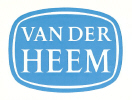
1961 RAPID EXPANSION
In 1961 the company employs 2,750 people and this later even grows up to 3,500 in 1965.
In this period the company expands enormous; new factories are opened in Teheran, Utrecht, Sneek and Leeuwarden (VSF). However the rapid increase in the costs of material and labour causes big problems. Cost cutting becomes more than necessary. One way in which this was done was by making and selling larger amounts of a single type.




1966 THE END
More duty free import of worldwide radio en TV products from Japan and other low wage countries makes formidable competition especially with regard to the prices on the Dutch market. Working with others is a necessity. After a two year partnership with Indola NV the company and the brand name Erres are sold to Philips in May 1966, exactly forty years after its foundation
COPYWRITE
© van der Heem & Bloemsma ® documentation center
Wassenaar, The Netherlands. (+31) 70 5111238
vdheem@planet.nl
www.vanderheem.com
www.aetherkruiser.nl
www.erres.eu
COLOFON
van der Heem & Bloemsma Documentation Centre
By publishing our extensive research results on the history of this beautiful Dutch company the “van der Heem & Bloemsma documentation centre” maintains here this industrial heritage and improves the accessibility to it. This resource is available to and meant for all possible amateurs, former employees their families and other people that may be interested in the company or in radio. The centre wants to prevent the loss of historic industrial material. The centre wishes to achieve her goal by presenting photo material, pictures, drawings, diagrams, documents, instructions, advertising, film, sound bites, newspaper articles and flyers that may portray (any facet of ) the company and their products.
